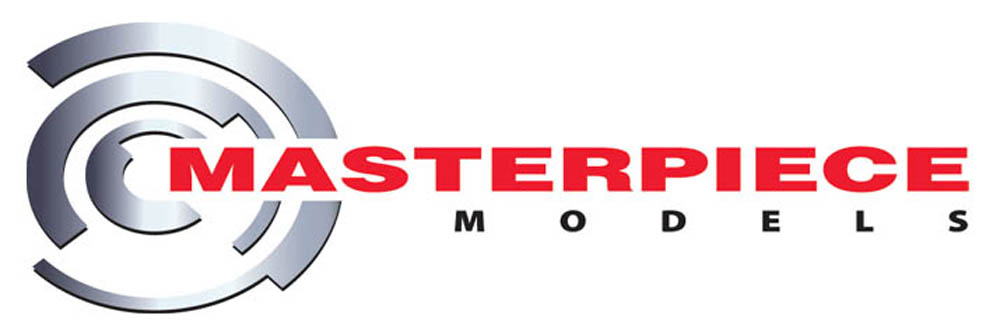Here is a fun article that our local newspaper
The Columbian recently did on us

Photo by Troy Wayrynen
John Geigle, CEO of Masterpiece Models, and Ed Warmack, a fabricator at the company who helped build the space toilet, stand next to a full-size replica space shuttle toilet created for a museum in Kansas. The museum says the No. 1 (so to speak) question they get is about going to the bathroom in space.
By Tom Vogt
Columbian Staff Reporter
Friday, July 8, 2011
File Photo
John Geigle’s model shop has produced a full-size replica of a space shuttle toilet for a museum in Kansas.
Did you know ?
The command module of problem-plagued Apollo 13 was disassembled after its 1970 flight and its parts shipped to museums, manufacturers and space centers across the world. Years later, the Kansas Cosmosphere retrieved its 80,000 missing parts and restored the spacecraft to its original post-flight condition.
Some of the Kansas Cosmosphere’s artifacts are on display less than 50 miles from Vancouver, on loan to the Evergreen Aviation & Space Museum in McMinnville, Ore.
On the Web:
NASA video shows how astronauts learn about zero gravity toilets.
OK, let’s just get it out of the way and then move on. The latest museum piece from John Geigle’s fabrication shop is a tribute to those who boldly go where no man has gone before.
It’s a space toilet.
To be more precise, it’s a replica of a toilet on a NASA space shuttle. Geigle’s team at Masterpiece Models built the shuttle fixture for a repeat customer, the Kansas Cosmosphere and Space Center.
A few years ago, the shop just east of Hazel Dell built a full-scale replica of a Mars rover for the museum.
“This time, the request was a little bit strange,” acknowledged Chris Orwoll, president of the Cosmosphere.
His museum in Hutchinson, Kan., boasts an all-star collection of space artifacts, including the original Apollo 13 — “Houston, we have a problem” — command module.
It is one of only three museums in the world to display spacecraft flown during America’s Mercury, Gemini and Apollo manned space programs.
But it’s looking to supplement its impressive roster of hardware with displays that represent the human aspects of space flight.
“We have a lot of artifacts,” said collections manager Meredith Miller, and information-dense interpretive panels that provide lots of reading material.
Part of the reason for Geigle’s assignment “was to create more interactivity” for a shuttle gallery scheduled to open in August, Miller said.
Geigle’s fabrication crew also created a 1/48th scale model of the International Space Station — about 8 feet long — that will hang in the Cosmosphere’s space shuttle gallery.
The toilet mock-up will help the Kansas museum answer a frequently asked question.
“How do astronauts eat, and how do they go to the bathroom? Those are two of the biggest questions,” Miller said.
The toilet replica isn’t just a three-dimensional display. Museum visitors will be able to climb into the driver’s seat, so to speak, providing some of the interactivity Miller was talking about.
The replica, built by Masterpiece Models fabricator Ed Warmack, can handle a 300-pounder, Geigle said.
Weight isn’t much of a factor for a fixture operating in zero gravity. But zero gravity also means a person who sits down doesn’t stay down long; that’s why the space toilet has spring-loaded restraints that clamp down on your thighs, preventing the user from floating away.
That’s not the only design difference. The shuttle toilet’s opening is only four inches; the user has to be pretty precise.
“In space, it’s crucial that everything aligns,” Orwoll said.
Astronauts practice “docking” with a training unit that includes video monitoring.
And here’s an opportunity — thanks to The Columbian’s archives — for a local astronaut to describe the experience of toilet-training, shuttle style.
“They actually have a camera under you, with cross hairs,” Camas astronaut Mike Barratt said a few years ago during a hometown visit. “You have to practice while watching a video screen.”
And the NASA career of another local astronaut hinged on that “How do you …?” question.
Former Hudson’s Bay High School teacher Dottie Metcalf-Lindenburger has retold the story a couple of times.
“When I was teaching astronomy at high school, one of my students said, ‘How do you go to the bathroom in space?’ I looked it up that night, and at the same time, they had posted that educators could become astronauts,” according to Columbian files.
“So, I had the answer to my student’s question, but I also got an answer to a dream that I had for a long time, and so I applied for the astronaut position,” Metcalf-Lindenburger said.
While the Vancouver-made version is strictly for display purposes, the real fixture uses suction to move waste through the system.
According to a NASA Web page for frequently asked questions, “Solid wastes are compressed and stored onboard, and then removed after landing. Wastewater is vented to space, although future systems may recycle it, such as they do on the International Space Station. The air is filtered to remove odor and bacteria and then returned to the cabin.”
A NASA video that explains the system will be part of the shuttle toilet display.
“It’s much more sophisticated than the Apollo capsule,” Miller said. Today’s astronauts “don’t have to wear those diapers.”
The photos below are by Rick Lawler



























